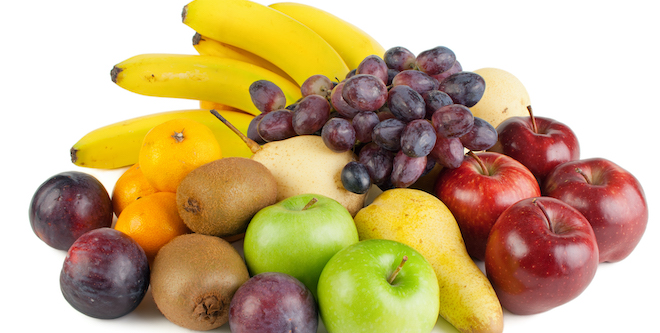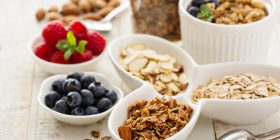Fibre is an important component of your daily food intake, but it’s one that is often overlooked. Fibre is a carbohydrate that passes through your digestive system without being digested. It is an important part of a healthy diet. Read on to learn about the types, benefits and ways to add fibre to your healthy eating plan.
What are the types of fibre?
There are two types of fibre: soluble and insoluble.
- Soluble fibre is the soft fibre that helps control blood sugar by delaying stomach emptying; this slows down the entry of glucose into your blood stream, and reduces the rise in your post-meal blood sugar levels.
- Insoluble fibre is the bulky fibre that helps to prevent constipation.

What are the benefits of fibre?
Fibre is beneficial for:
Controlling blood sugar
When we eat soluble fibre, it slows down the digestive process. This means that glucose is released into the blood more slowly and over a longer time frame. This means a more even level of glucose, and less peaks after eating.
Reducing cholesterol levels
Soluble fibre can help lower low-density lipoprotein (LDL, also known as the 'bad cholesterol').
Increasing the feeling of being full
Eating foods that are higher in fibre gives the sensation of being more full. As a result, people feel less hungry between meals. Fibre is a bulkier nutrient and makes the stomach more distended which sends signals to the brain that suppress the appetite.
Regulating bowel movements
Fiber adds bulk to the stool making it softer and easier to pass.

How can you add more fibre to your diet?
Many foods contain both soluble and insoluble fibre. Unfortunately, many people don't get enough fibre. The table below lists food sources of soluble and insoluble fibre.
| Soluble fibre sources | Insoluble fibre sources |
| Legumes (navy beans, kidney beans, soybeans) | Legumes (beans and peas) |
| Bran, oats, rye and barley | Wheat bran |
| Some fruits, such as figs, avocados, plums, prunes, ripe bananas, apples and pears | Some fruits, such as avocado and unripe bananas |
| Berries, including raspberries, blackberries and strawberries | The skins of some fruits, including kiwis, grapes and tomatoes |
| Certain vegetables, such as broccoli and carrots | Certain vegetables such as green beans, cauliflower, zucchini and celery |
| Root vegetables such as potatoes, sweet potatoes and onions | Potato skins |
| Nuts (almonds are one of the best sources) | Nuts |
| Flax seeds | Whole grain breads and pastas |
Reading food labels
It’s important to check the Nutrition Facts Table on packaged foods, to ensure that you’re getting the best fibre content possible. According to Health Canada’s Nutrition Labelling program, the following claims can be made about fibre content in foods:
- Foods with at least 2 grams of fibre per serving can claim to be a “source” of fibre
- Foods with at least 4 grams of fibre per serving can claim to be a “good source” of fibre
- Foods with at least 6 grams of fibre per serving can claim to be a “very good” or “excellent” source of fibre

How much fibre do you need?
The Diabetes Canada nutrition guidelines recommend that adults should consume the following amounts of fibre every day, and incorporate a combination of both soluble and insoluble fibre.
Women 19-50 years of age: 25 g/day
Women ≥ 51 years of age: 21 g/day
Men 19-50 years of age: 38 g/day
Men ≥ 51 years of age: 30 g/day
Here are some tips to increase your fibre intake:
- Eat oatmeal, bran or another whole grain cereal for breakfast
- Choose whole grain bread, pasta, cereal, crackers and rice
- Add a small handful of almonds or other nuts to a salad
- Use whole grain flour in homemade baked goods
- Add barley, beans and lentils to soups and salads
- Top yogurt or cereal with flax seeds
- Eat the skins and seeds of vegetables and fruit
 Diabetes Care Community Learn, connect and care
Diabetes Care Community Learn, connect and care





